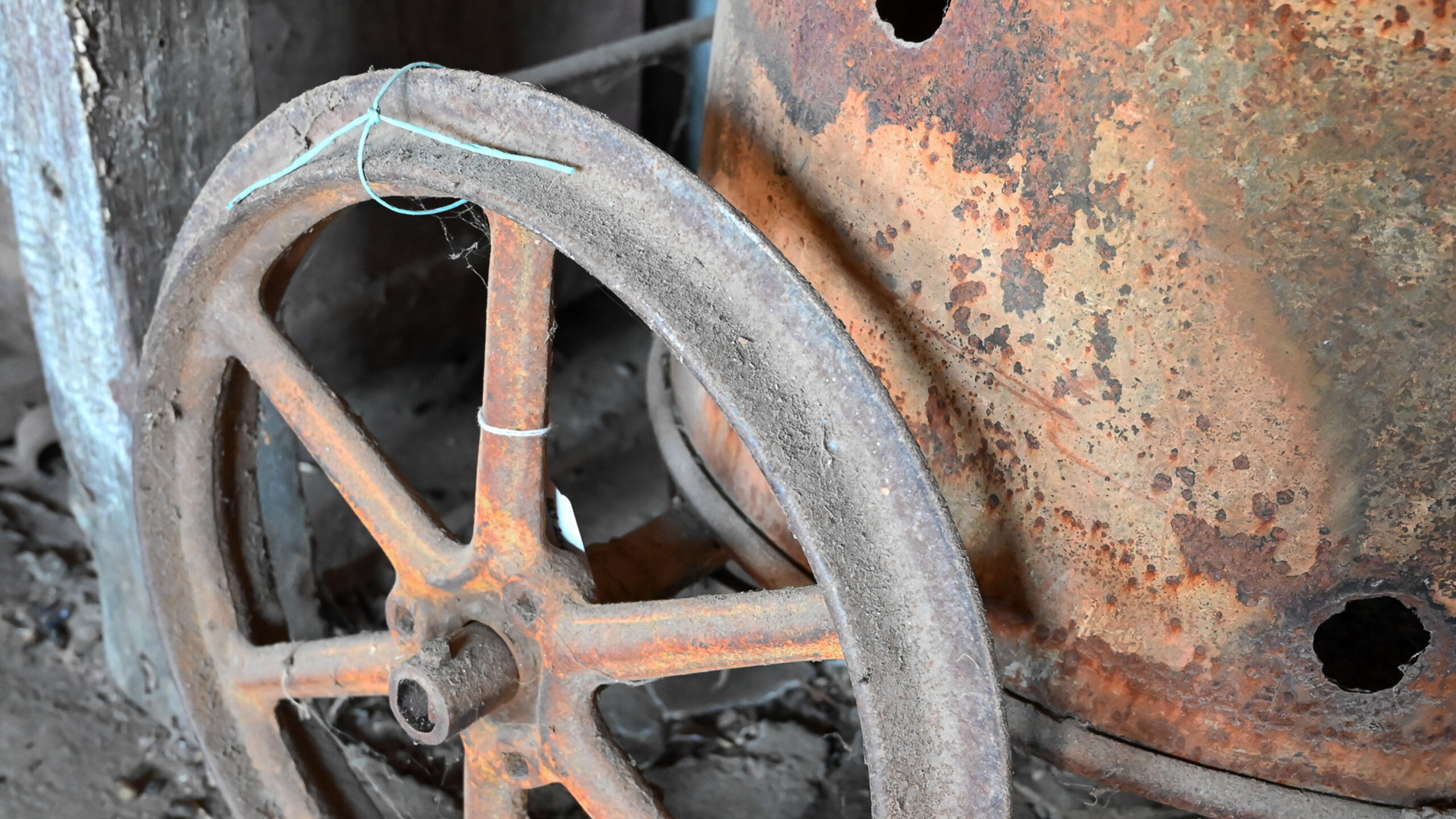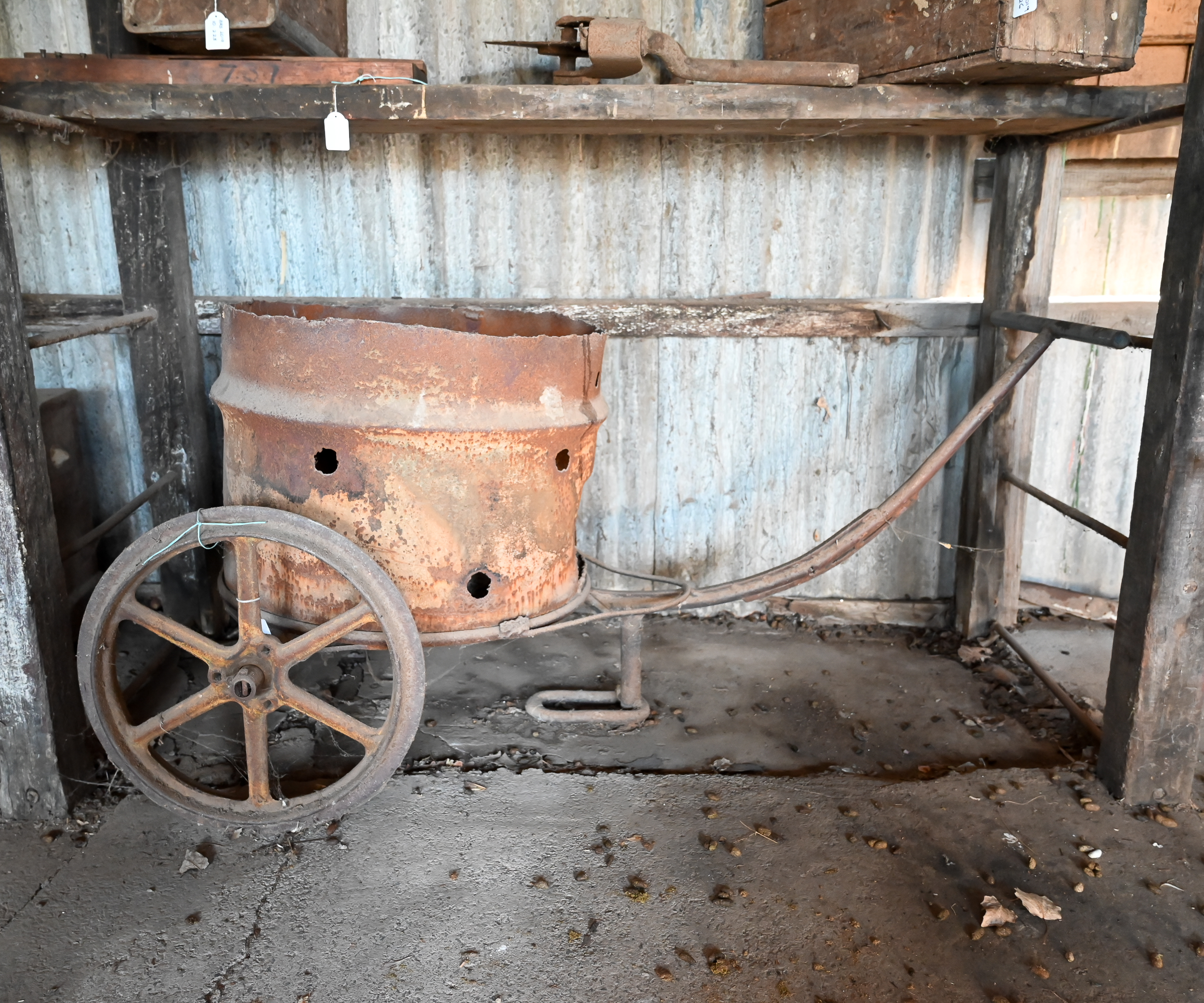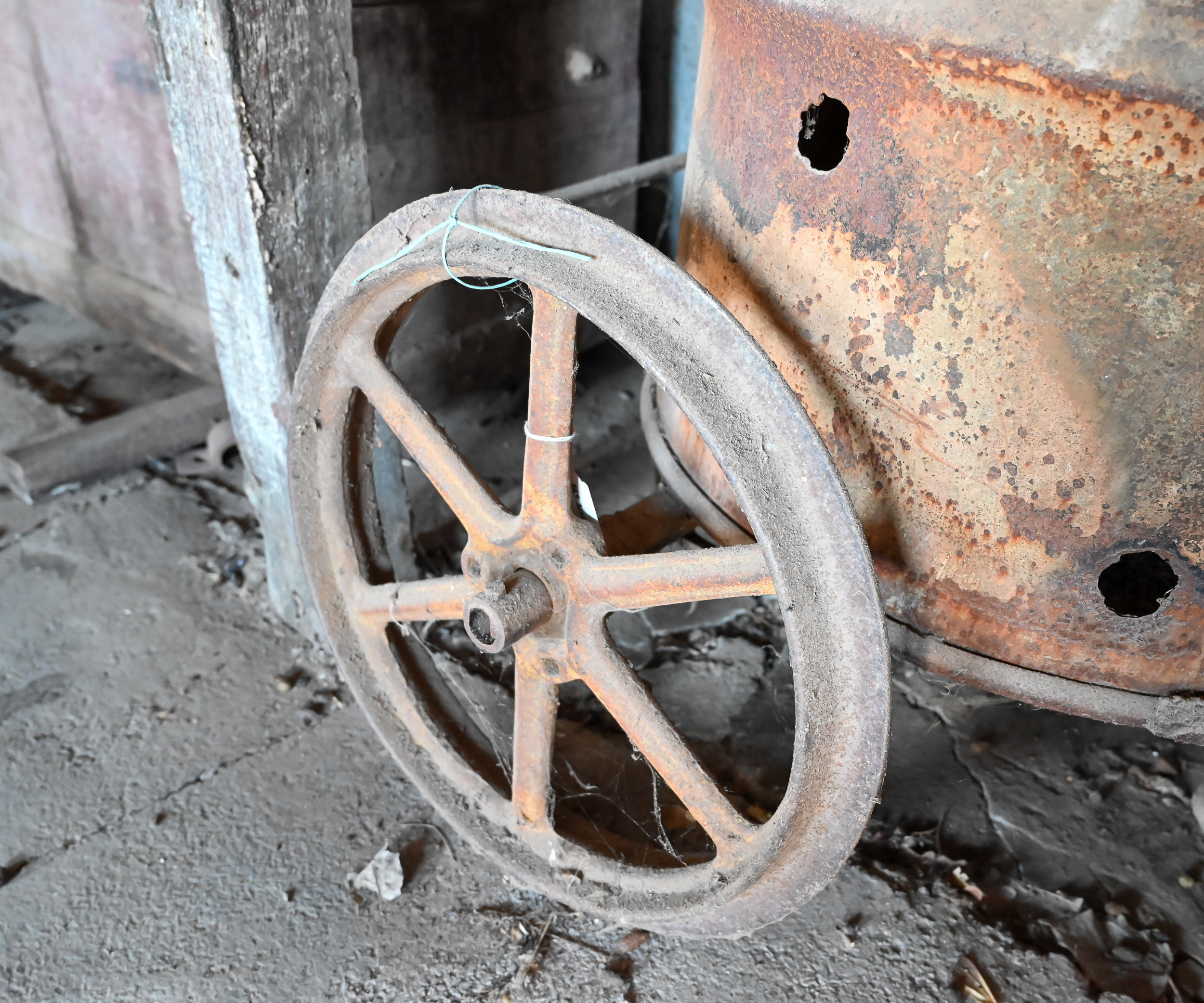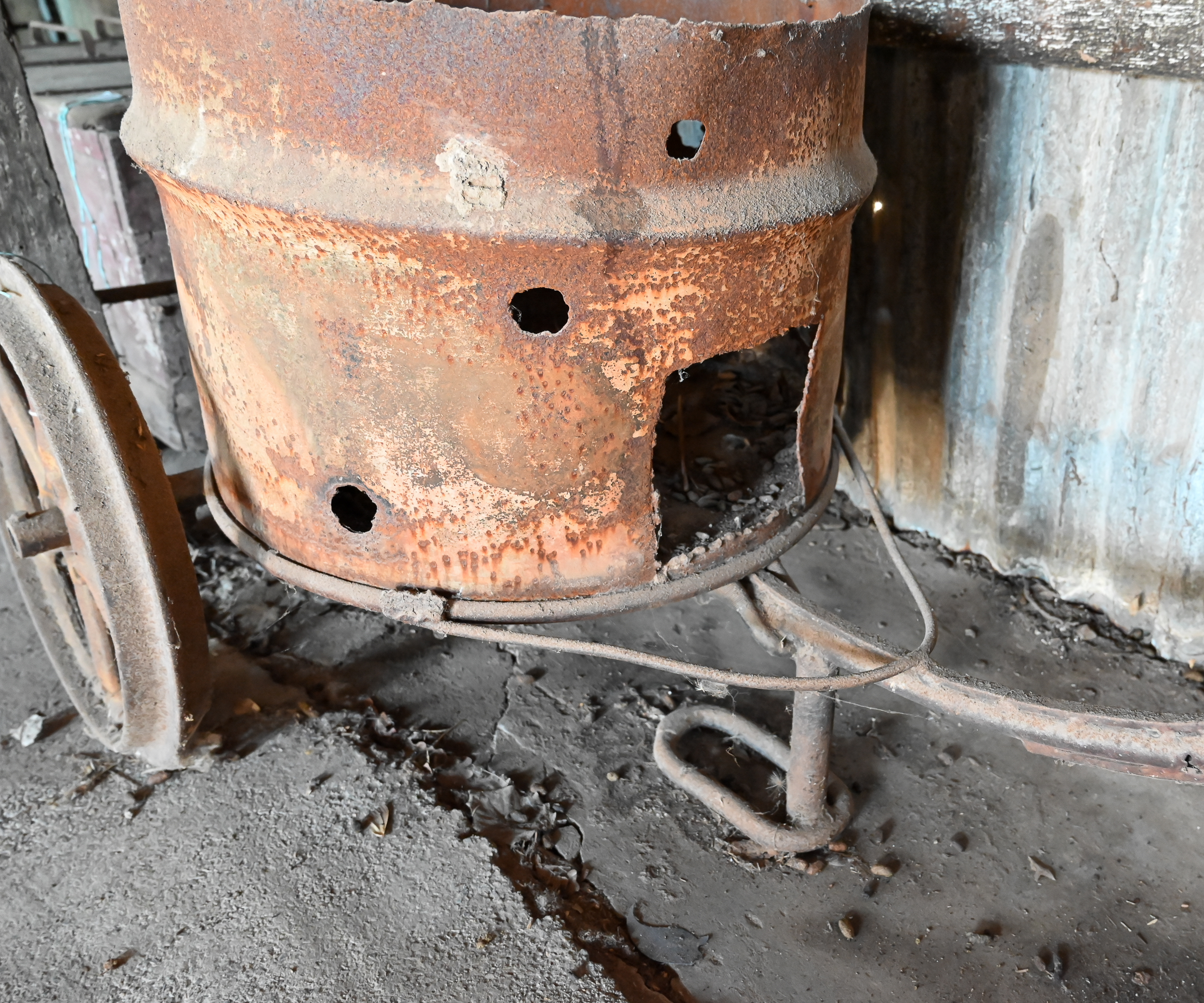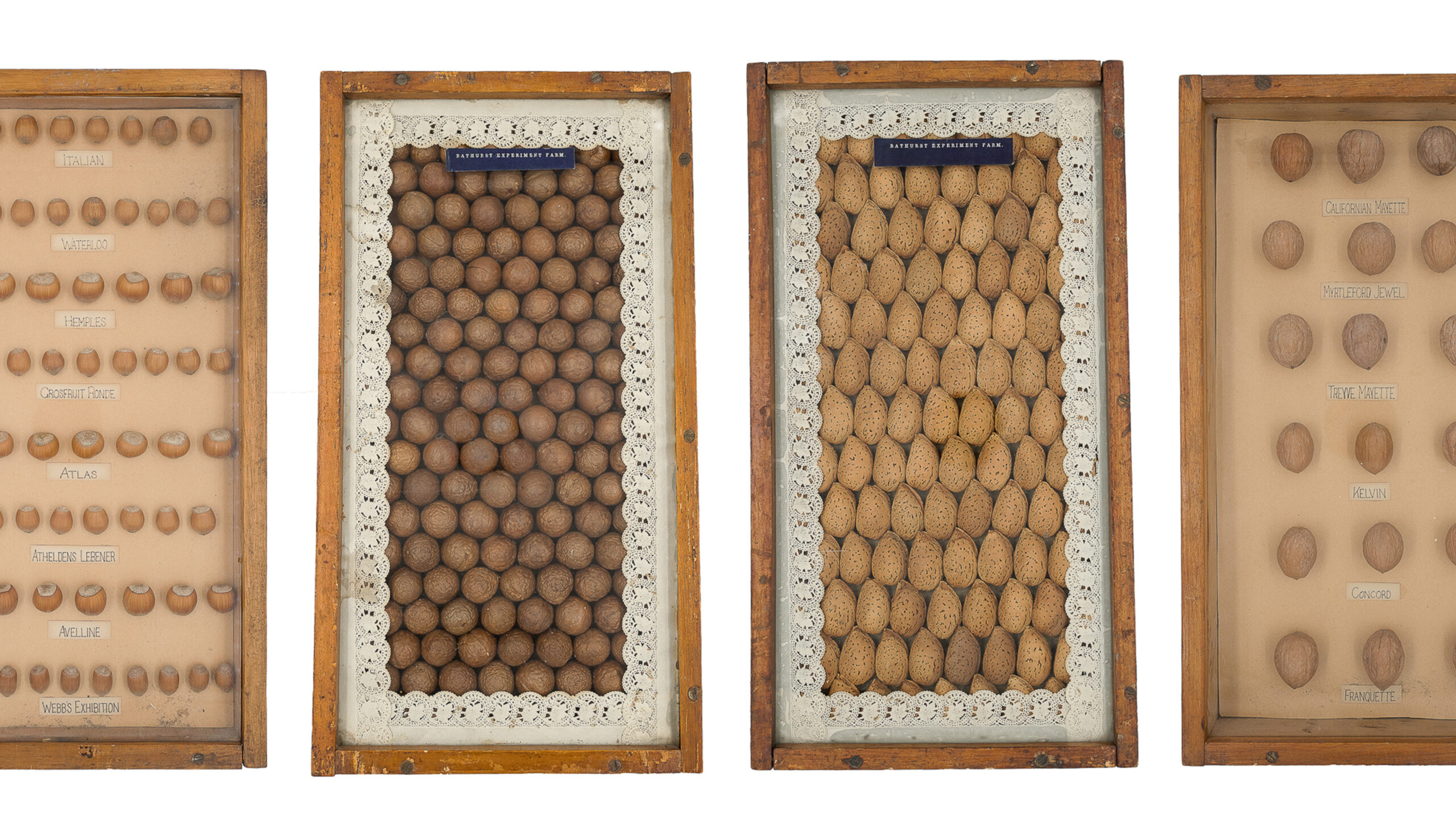Fire and Frost
Keeping the Fire Cart Burning
Keeping warm during cold winter mornings was a constant consideration when working in the orchard and fields of the Bathurst Experiment Farm. This hand-drawn fire cart, which was made on the Farm from a forty-four-gallon rolled steel drum and welded frame, provided workers with a source of warmth on frosty winter mornings.
Along with providing warmth, the cart had two other uses within the Farm’s orchard. One was to provide a contained fire to immediately burn any prunings, which helped prevent the potential spread of disease from cut branches. Additionally, this burning also helped guard against frost damage to the orchard.
Aside from pests and disease, frost is the greatest threat to stone fruit at various stages of development. A spring frost can damage buds and fruit set, with a late or unseasonal frost causing plant tissue to freeze, destroying the fruit. In October 1910, crops in the Farm’s orchard were saved from the effects of late frosts by the lighting of fires. The fires were fed with green wood, coal, petroleum, and wet straw to create a thick blanket of smoke across the orchard, a ‘smudge,’ slowing the loss of heat from the soil and preventing young fruit burning.
Experiments on the Farm in 1916 with oil burners, smudge pots, rather than fires were found to be too costly and impractical. The kerosene tin fires were replaced with fire carts as forty-four-gallon drums became available during World War II but were still insufficient in 1936, 1944 and 1953 to prevent heavy losses from late frosts. This unassuming fire cart demonstrates that it isn’t always the latest technology that can have the greatest impact.


